NEW
 .
.
 .
.
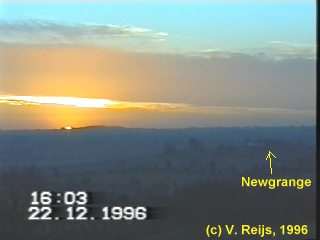
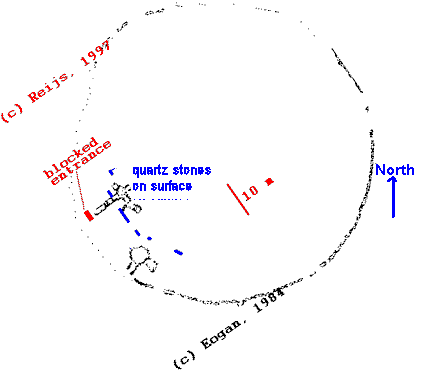
The colored text is from myself. During my visit in December 1996,
one
could see some quartz
stones
(pers. comm. P. Mulligan [2008]) at the
surface
of the mound in a circle of some 7.5 meters from the now blocked
entrance.
See below picture, where I corrected the
colors using
a colorcard.
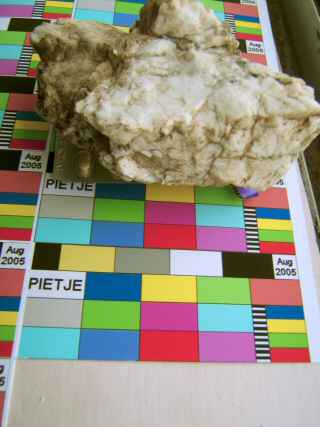
A test to determine if stones are gypsum, calcite or quartz can be
seen here.
Some tests are:
| Rock |
MOHS Hardness |
scratched
by |
scrathes
on |
Fizzes
with Vinegar |
|
| fingernail |
paperclip |
glass |
|||
| Gypsum |
2 |
Yes |
Yes |
No |
No |
| Calcite |
3 |
No |
Yes |
No |
Yes |
| Quartz |
7 |
No |
No |
Yes |
No |
A photograph of the mound Dowth:
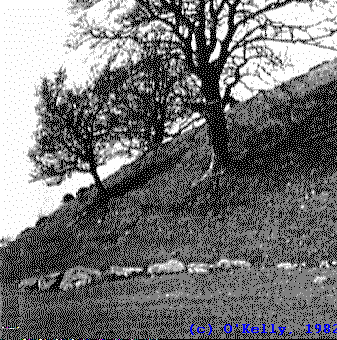
Note from O'Kelly, [1982], Plate 18: "note the gradual slope of the mound
towards the
kerb and the absence of a bank of cain slip outside it".
At Newgrange one can see that it was build in many phases. A good example is:
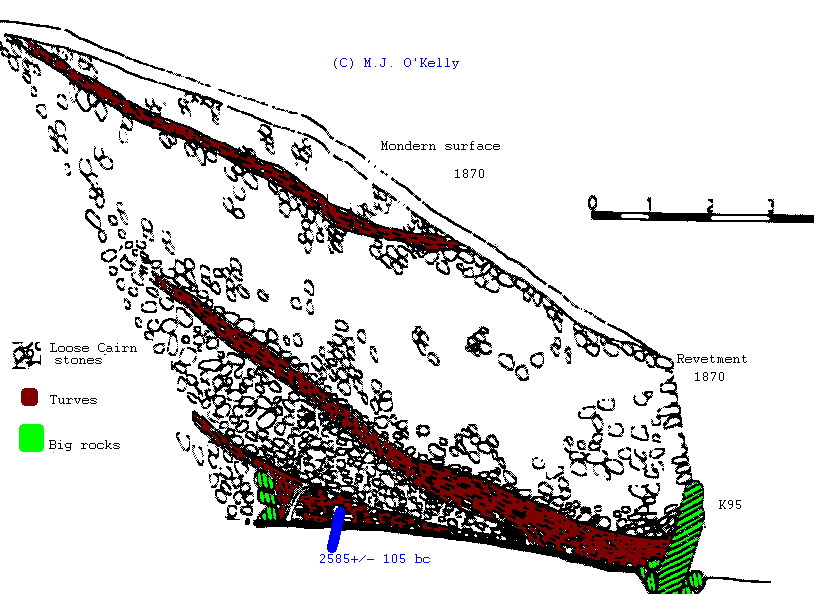
Look at the possible revetment stones (green) some 7 m from
the K95.
Combining the above and knowing that the cairn slip at Newgrange was
some 10 m, it could be that the cairn of Dowth was some 7.5 m smaller
in
diameter than the kerb circle. The cairn could have been covered, at
least
at the west side, with quartz.
The strange thing though is that the entrance of the small passage
was then outside the cairn!
Excavation is of course needed to validate this idea.